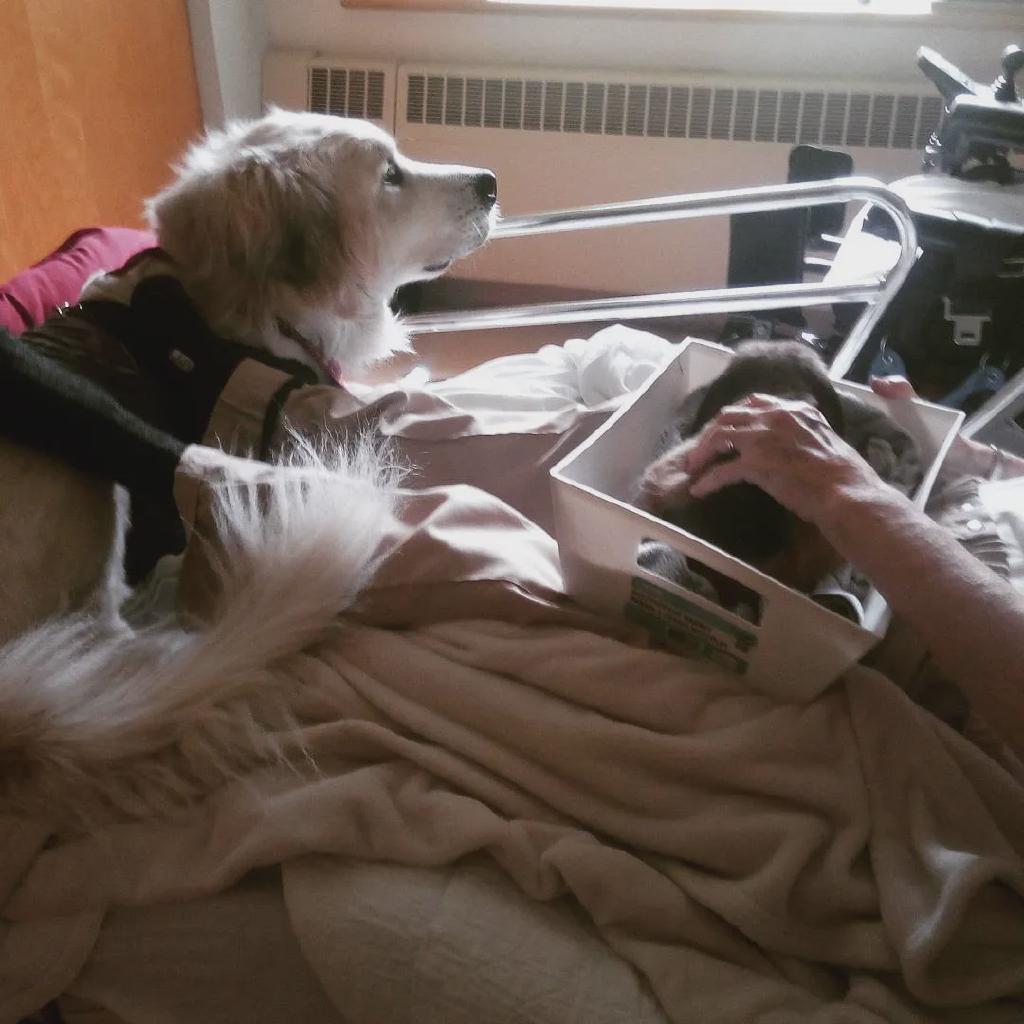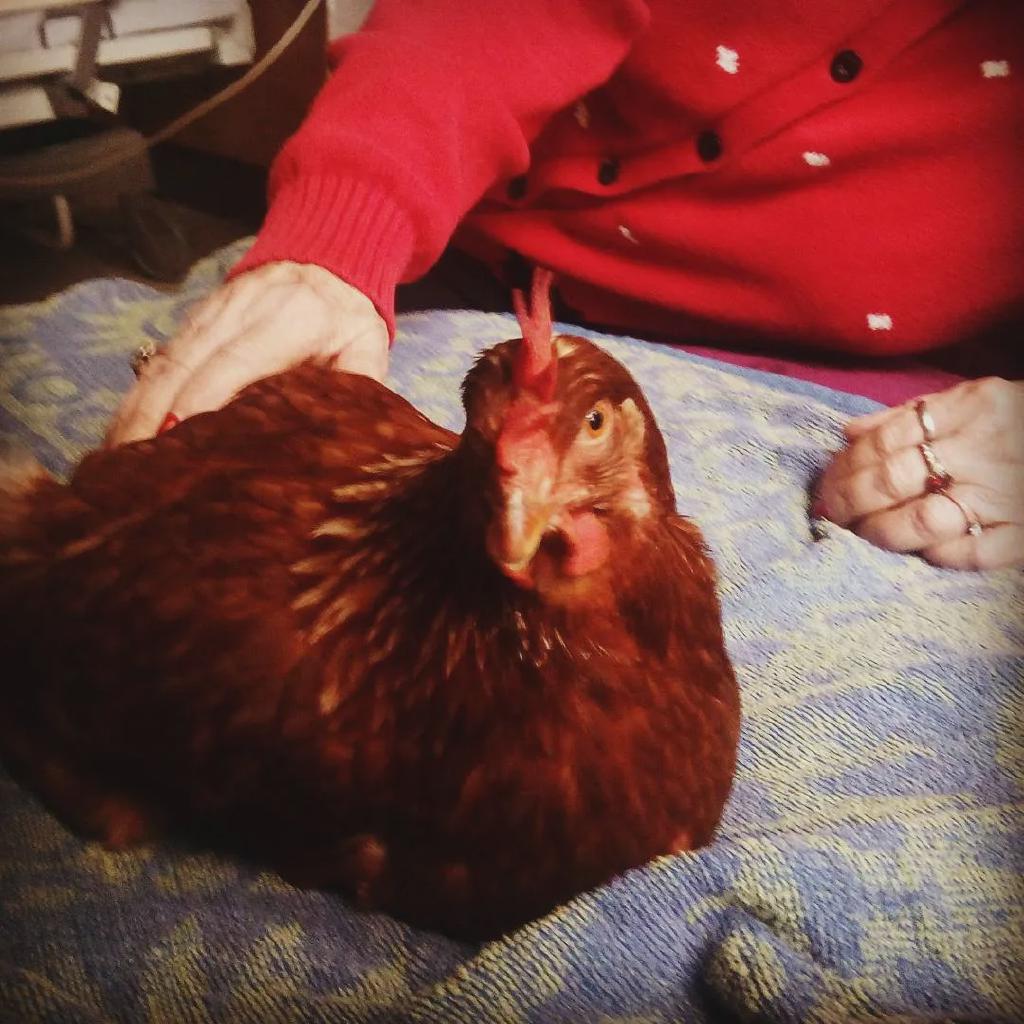Zootherapy

Published on:
Animal-assisted therapy: the healing power of animals
What is animal-assisted therapy?
Animal-assisted therapy, also known as pet therapy or animal-assisted intervention, encompasses various alternative therapeutic methods that utilize the presence of a domestic or companion animal to support those suffering from mental, physical, or social disorders. It aims to reduce stress and alleviate the effects of medical treatments or post-operative issues.
Animal-assisted therapy is a form of well-being support that complements traditional therapies such as psychotherapy, medication, and other treatments. Its goal is not to cure diseases or disabilities, nor to provide a magical solution. However, it accompanies individuals towards better well-being by often providing comfort, connection and additional motivation, such as encouraging patients to go outside, relearn to walk after an accident, or socialize despite social fears. In this way, patients can derive numerous benefits.
Animal-assisted therapy also offers a source of emotional comfort and can encourage communication and social interaction, thereby improving the overall quality of life for patients.
Animal-assisted therapy can:
- Help a patient connect when they are withdrawn
- Reduce stress and anxiety
- Boost morale
- Stimulate cognitive and motor skills
- Foster communication and social interactions
- Provide emotional support and alleviate feelings of loneliness
- Encourage responsibility and daily routines
The Triangular Synergy
Animals do not play the role of psychologist or therapist. Their role is to assist the qualified practitioner in connecting with the patient. When barriers fall and the patient relaxes in the presence of the animal, a bond forms between the animal and the person they are working with. This creates a triangular synergy where the patient connects with the animal, the practitioner also connects with the animal, and thus a connection forms between the practitioner and the patient. Through this bond, the practitioner can gently help the patient to open up by encouraging participation in activities and initiating conversations focused on the patient’s needs.
Therapy Dogs
Dogs do not play the role of therapist, but act as mediators to contribute to the well-being of individuals. For example, in therapies for autistic children, dogs can help improve communication and reduce social anxiety. Their calm or joyful presence can also be beneficial in trauma rehabilitation centers, where they provide emotional comfort and help rebuild trust. Additionally, in rehabilitation programs for people with mental disorders, dogs can encourage physical exercise and reduce feelings of social isolation, thereby improving overall quality of life for participants.
Therapy Cats
Therapy with cats is an animal-assisted therapy method that uses the presence of felines to promote physical, emotional, and mental health. Cats, known for their soothing nature and ability to form emotional bonds with humans, are favored companions in this therapy. The purring of cats, renowned for its calming and comforting effects, further enhances their therapeutic benefits. This approach is particularly beneficial for reducing stress, improving mood, and encouraging social interaction.
Therapy Birds
Birds in therapy represent a unique approach that uses the calming presence and soothing characteristics of birds to support the emotional and mental well-being. Their melodious songs and often curious and colorful behavior can help reduce stress, improve mood, and promote relaxation. Hospital environments, nursing homes, and rehabilitation centers can all benefit from the therapeutic presence of birds, offering a enriching sensory experience while fostering a sense of connection with nature.
Other Animals
Animals used in animal-assisted therapy go beyond the usual dogs, cats, and birds. Any type of animal can be a valuable companion for therapists, depending on their temperament, social skills, and adaptability. Therapists carefully select animals after rigorous testing to ensure they enjoy their role and feel comfortable with humans. Provided their behavior is appropriate, a variety of animals such as horses, pigs, rats, guinea pigs, ferrets, rabbits, and many others can effectively contribute to animal-assisted therapy.
Who can benefit from animal-assisted therapy?
Animal-assisted therapy can benefit various groups of people, including:
-
Individuals with trauma or post-traumatic stress disorder (PTSD): Animal-assisted therapy can also be beneficial for people with past traumas, helping to reduce symptoms of PTSD and promoting emotional healing.
-
Elderly individuals: To stimulate senses, reduce social isolation, and improve overall quality of life.
-
Children facing challenges: To promote socialization, reduce anxiety related to parental separation, and support those struggling in school.
-
Individuals with mental disorders: To alleviate anxiety, depression, and improve mood through animal interaction.
-
Hospitalized patients: To provide emotional comfort, reduce stress, and aid recovery in some cases.
-
Individuals with physical or mental disabilities: To improve quality of life, boost self-confidence, and promote communication and social interaction.
-
Prisoners: Animal-assisted therapy can help reduce stress, agitation, and social isolation by offering positive interaction with animals. This can contribute to improving emotional well-being among inmates, fostering impulse control, and sometimes even facilitating social reintegration after release.

Published on:
THE CONTENTS OF THIS WEBSITE ARE NOT MEANT TO SUBSTITUTE FOR PROFESSIONAL HELP AND COUNSELING. THE READERS ARE DISCOURAGED FROM USING IT FOR DIAGNOSTIC OR THERAPEUTIC ENDS. THE DIAGNOSIS AND TREATMENT OF NARCISSISTIC PERSONALITY DISORDER CAN ONLY BE DONE BY PROFESSIONALS SPECIFICALLY TRAINED AND QUALIFIED TO DO SO. THE AUTHOR IS NOT A MENTAL HEALTH PROFESSIONAL. PLEASE CONSULT A HEALTH CARE PROVIDER FOR GUIDANCE SPECIFIC TO YOUR CASE.

















